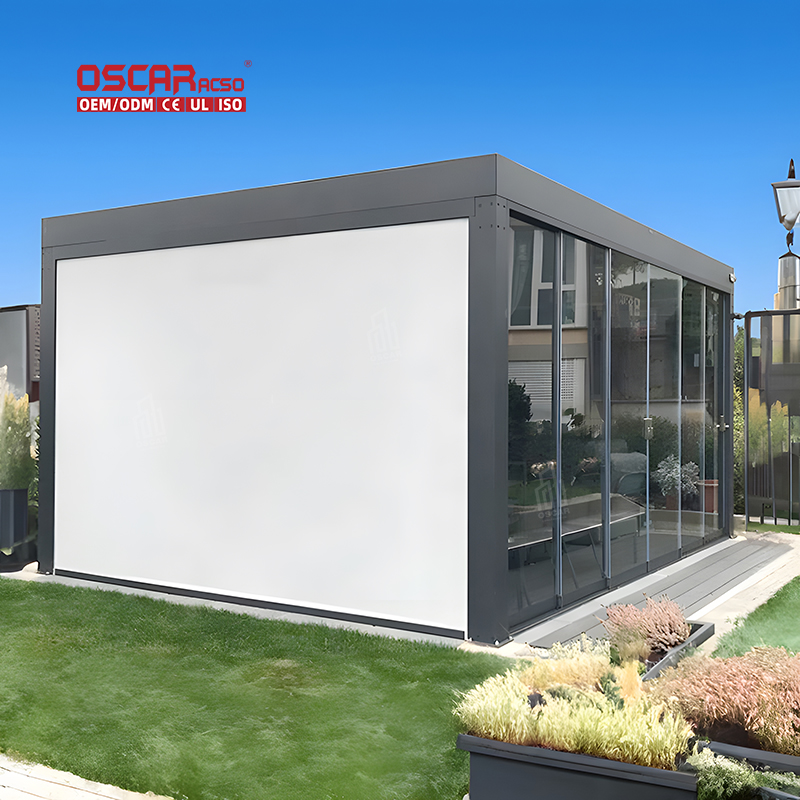Pergolas on Grass, Unlocking Your Yard\’s Hidden Potential 🌿
Yes, a pergola can absolutely be installed on grass! 🎉 This approach can transform a simple lawn into a stylish and func...
.jpg)
Yes, a pergola can absolutely be installed on grass! 🎉 This approach can transform a simple lawn into a stylish and functional outdoor living area, perfect for relaxation and entertainment. However, the key to success lies in proper ground preparation and selecting the right anchoring method to ensure stability and longevity against the elements.
Grass Installation: Pros and Cons 🤔
Choosing to place your pergola directly on the grass comes with its own set of advantages and challenges.

The Upsides:
- •
Aesthetic Integration: Blends seamlessly with garden landscapes, creating a natural and organic feel.
- •
Cost-Effective Foundation: Often avoids the need for expensive paved bases or decking initially.
- •
Flexibility: Offers greater flexibility in placement within your yard, allowing you to capitalize on the best views or sunlight.
The Downsides:
- •
Moisture and Rot Risk: Grass and soil retain moisture, which can accelerate rot in wooden posts if not properly protected.
- •
Potential Instability: Softer ground may require more robust anchoring to prevent wobbling or shifting, especially in windy conditions.
- •
Maintenance Access: Mowing and lawn care around the base can be slightly more cumbersome.
Choosing the Right Materials for Grass Installation 🛠️
Your choice of material significantly impacts both the installation process and long-term durability on grass.
- •
Wood (Cedar, Redwood, Pressure-Treated): Offers a classic, natural look. However, it requires protective measures like setting posts on pavers or using protective sleeves to prevent ground contact and moisture-related rot. Regular staining or sealing is also necessary.
- •
Aluminum: A top-tier choice for grass installations. It’s lightweight, rust-resistant, incredibly durable, and requires very low maintenance. Many aluminum pergola kits include ground stakes suitable for grass.
- •
Vinyl: Highly resistant to moisture, rot, and insects. It won’t warp or fade, making it another excellent low-maintenance option for grassy areas.
- •
Steel: Very strong and durable, but heavier, which may require more substantial anchoring on softer ground. Needs to be properly coated to prevent rust.
Anchoring Methods: Keeping Your Pergola Secure 🌬️
This is the most critical step for a pergola on grass. A secure anchor prevents instability or collapse.
- •
Concrete Footings: The gold standard for permanence and stability. Involves digging holes below the frost line, setting posts, and filling with concrete. This method provides unmatched strength against wind and settling.
- •
Ground Anchors: These are metal stakes (spiral, arrowhead) driven into the ground and attached to the pergola legs with cables or straps. They offer a solid, non-permanent solution that doesn’t require concrete.
- •
Weighted Bases/Planters: For a completely non-invasive, temporary anchor, you can use large planters or bases filled with sand, gravel, or concrete. These are attached to the pergola legs and provide stability through weight.
Step-by-Step Installation Guide 📋
A successful installation hinges on careful preparation and execution.
- 1.
Site Assessment & Preparation: Choose a level area. Clear the grass and vegetation from the installation spots. Level the ground thoroughly and consider laying a weed barrier fabric.
.jpg)
- 2.
Check Local Regulations: Always check local building codes to see if you need a permit, especially for larger or more permanent structures.

- 3.
Choose Your Anchor Method: Decide between permanent (concrete footings) or temporary (ground anchors, weights) based on your needs and local rules.
- 4.
Assemble the Pergola: Follow the manufacturer’s instructions carefully if using a kit. Ensure all beams and rafters are securely fastened.
- 5.
Secure and Finalize: Implement your chosen anchoring method. For concrete, allow ample time to cure. Backfill and tidy the area around the base.
DIY vs. Professional Installation 👨🔧
The choice between doing it yourself and hiring pros depends on your skills and the project’s complexity.
- •
DIY Route: Can be more cost-effective if you’re handy and have help. Best suited for simpler kits designed for easy assembly and lighter anchoring methods.
- •
Professional Help: Recommended for complex designs, heavy materials, or if permanent concrete footings are required. Professionals bring expertise in ensuring structural integrity, navigating permits, and achieving a flawless finish that complies with local codes.
Creative Ideas and Functional Uses 💡
A grass-based pergola opens a world of design possibilities.
- •
Define Outdoor Rooms: Use it to anchor a dedicated dining, lounge, or cooking area in your garden.
- •
Support Climbing Plants: Train vines like wisteria, jasmine, or climbing roses to create a living, flowering roof 🌸.
- •
Add Ambiance: Incorporate string lights, hanging lanterns, or outdoor-rated curtains for privacy and a cozy atmosphere at night.
.jpg)
- •
Integrate with Landscaping: Surround it with gravel paving, stepping stones, or flower beds to create a cohesive and beautiful hardscape-to-grass transition.
While a traditional wooden pergola on a patio is classic, a modern aluminum pergola securely anchored on your lawn offers a unique blend of natural integration and contemporary style. It creates a dedicated oasis that feels both purposeful and part of the natural landscape.

